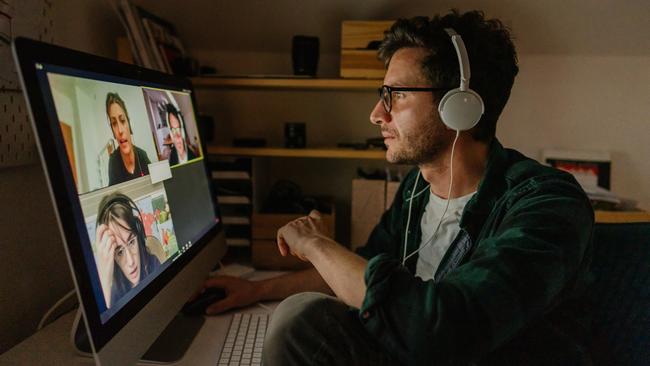How to stop eye strain from staring at screens
Now that most of work and life has gone virtual, all that screen time is causing eye pain everywhere. Here are a few fixes.

Life has gone almost entirely virtual. Since lockdown started, people who used to see their overly chatty co-workers in real time spend an average of 9½ hours a day looking at laptops and smartphones, reports a survey conducted by OnePoll.
It takes just two consecutive hours of staring at pixelated Zoom faces or scrolling Excel data to put you at risk for eyestrain and dryness, blurred vision and headaches, according to the American Optometric Association.
That’s because, like Pilates or making elaborate lattes, vision takes effort. Tiny eye muscles “are no different from muscles in arms or legs,” says Scott P. Drexler, an assistant professor of Ophthalmology at the University of Pittsburgh School of Medicine. “When you overuse them, they get fatigued and hurt.”
Step one: Adjust the way you engage with devices. “Your phone should always be a foot (30cm) from your face; your laptop about two feet away,” says Jamie Mitchell, a neuro-ophthalmologist at Manhattan Eye, Ear & Throat Hospital.
Keep screens about 10cm below your sight line, adds Drexler; looking slightly downward is easier on the eyes. A tilted laptop stand, like the Rain Design iLevel2, lets you stick to those guidelines without sacrificing ergonomics.
Tweaking your environment can make a difference, too. Most WFH professionals have escaped the harsh lighting of offices — whose fluorescents and LEDs can overtax eyes with subtle flickering and high wattage — but you can still take steps when it comes to luminescence. Swap standard bulbs for ones like Philips EyeComfort LED lights that don’t give off glare or emit high-energy blue-light wavelengths.
That villainous blue light contributes most to focusing problems, says Drexler. It also hinders production of melatonin, the hormone that regulates your body’s sleep-wake cycle. The less shut-eye you get, the less respite for your eyes, says Mitchell.
Attachable anti-glare filters, like EyeJust’s light-blocking screens, act as a buffer against blue light, and stop ambient light from reflecting off your computer. Blue-light-blocking glasses, like Roka’s ZX-2 lenses can nix up to 42 per cent of harmful wavelengths. For fashion-conscious Zoomers, there’s even Tom Ford pairs.
Despite these tips, doctors still recommend the 20/20/20 rule: Every 20 minutes, take 20 seconds to look 20 feet (6m) away. That’s enough time to check on the kids before your next dial-in.
The Wall Street Journal







To join the conversation, please log in. Don't have an account? Register
Join the conversation, you are commenting as Logout